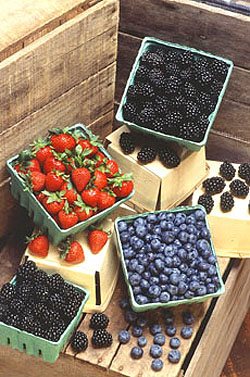NEWS: Better Test For Antioxidants
| The Journal of Agricultural and Food Chemistry reports a better test for measuring the antioxidant value of foods. The CAA (cellular antioxidant activity) assay is a more biologically relevant method than the popular chemistry antioxidant activity assays because it accounts for some aspects of uptake, metabolism and location of antioxidant compounds within cells, according to the authors of the study. Antioxidant activity has been measured using a range of lab-based assays, including the ferric reducing ability of plasma (FRAP) assay, the oxygen radical absorbance capacity (ORAC) and Trolox equivalent antioxidant capacity (TEAC). A test of select phytochemicals, the researchers reported that quercetin (a flavonoid found in berries, broccoli and leafy green vegetables, capers, citrus, cranberry, red grapes and others) had the highest CAA value, followed by kaempferol (found in apples, cabbage, onions, leeks and spinach,), epigallocatechin gallate (EGCG, found in tea), myricetin (found in berries, fruits, grapes, vegetables and walnuts) and luteolin (found in basil, celery, parsley, peppermint, thyme, sweet peppers), respectively. |  Get your antioxidants here. |
|
| The CAA centers on dichlorofluorescin, a probe trapped within cells that can be easily oxidized to produce fluorescence. The decrease in cellular fluorescence when compared to the control cells indicates the antioxidant capacity of the compounds. The popular ORAC is still a valuable test; the CAA shows how the compounds react with cells and are believed to be is a stronger measure of how antioxidant compounds could potentially react in the body. Read more about antioxidant foods in THE NIBBLE online magazine. | ||


